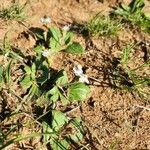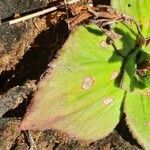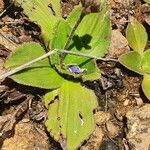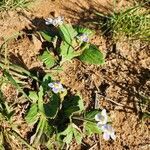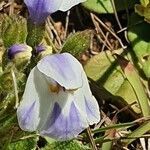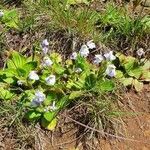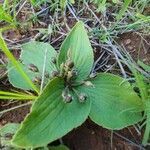Leaves petiolate; lamina broadly ovate to lanceolate, 1.5–5 x 1–3 cm., entire, broadly cuneate at base, subacute at apex, glabrous above, densely pubescent beneath, numerous parallel nerves obscure or indented above, prominent beneath, often purple beneath; petiole short and broad.
Herb, up to 80 mm tall, pubescent. Leaves radical, rosulate, broadly ovate, many-nerved, rather fleshy. Flowers racemose, up to 90 mm long. Filaments not or scarcely appendaged. Flowers pale bluish.
Inflorescence 4–8 cm. long, with flowers racemose in upper third, pubescent; bracts opposite, lanceolate 4–10 mm. long, shorter than the pedicels at least in fruit.
Corolla purple and white, up to 18 mm., long, upper lip short bilobed, lower lip obtusely 3-lobed the central very broad.
Calyx c. 5 mm. long up to 9 mm. in fruit, shortly toothed, pubescent mainly on the nerves.
A rosette perennial with short stout rhizome and numerous orange-yellow roots.
Capsule ovoid-cylindric, glabrous, slightly longer than calyx.
